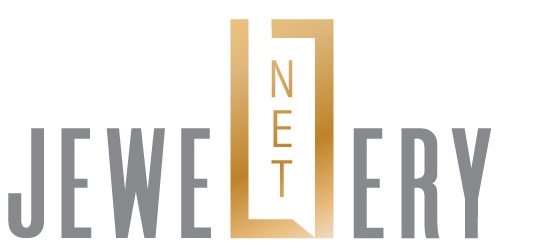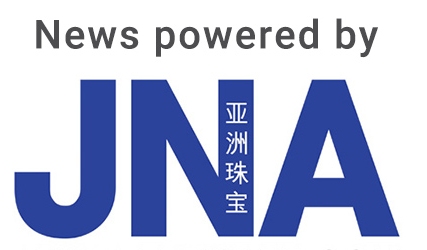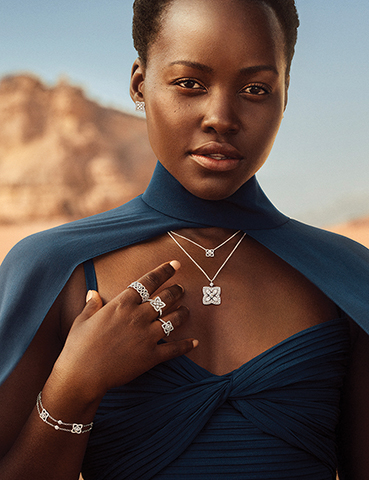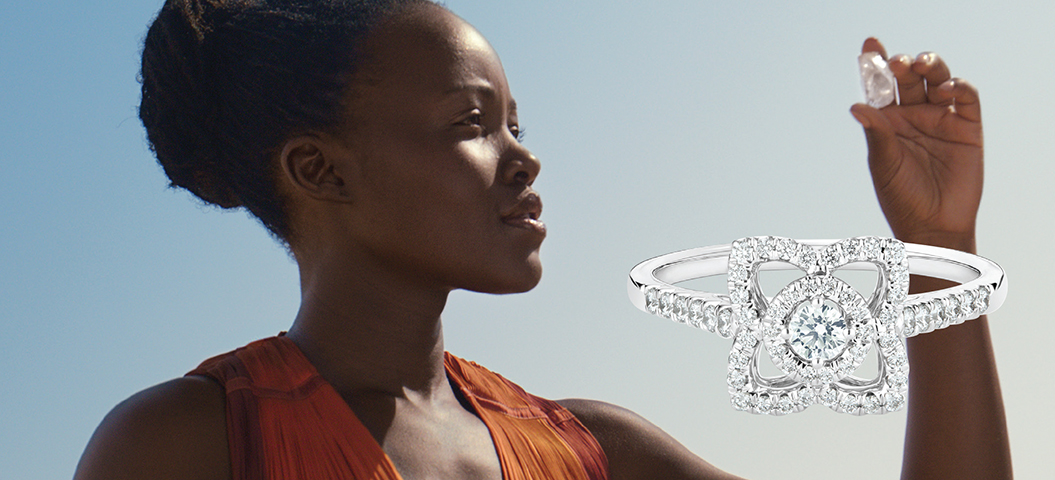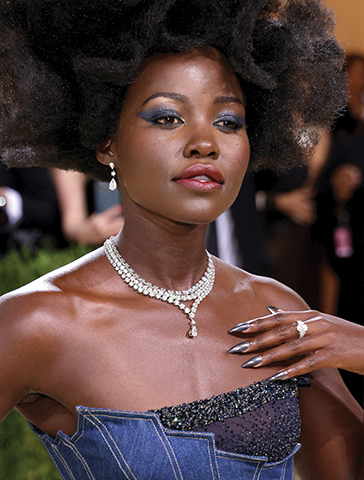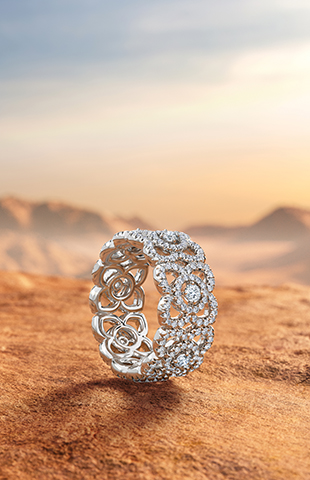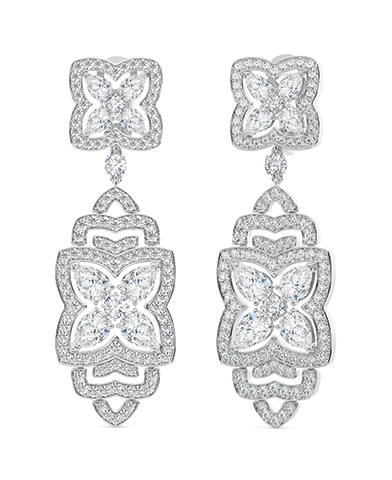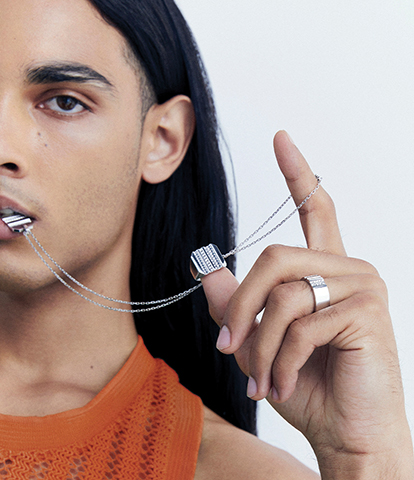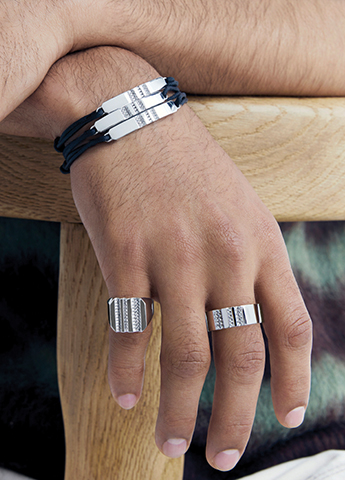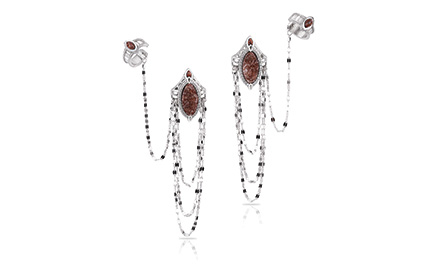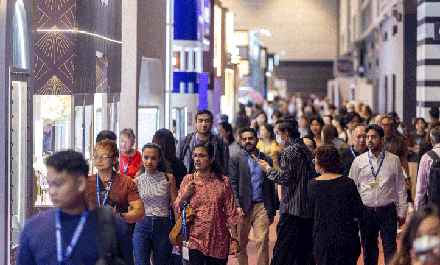De Beers Group puts sustainability and ESG at the heart of its branding and innovation strategies.
This article first appeared in the JNA November/ December 2022 issue.
De Beers Group is going back to the source as it unveils leadership changes, new branding strategies and innovations coming off a stellar year in diamond trading.
Bruce Cleaver, who has steered the group as CEO since 2016, is giving way to Al Cook in early 2023. Cleaver will become co-chairman of De Beers Group, alongside the current chairman and Anglo American CEO Duncan Wanblad. Cook has over 25 years of international leadership experience, most recently as executive vice president for Exploration & Production International at energy company Equinor.
De Beers has also appointed actress Lupita Nyong’o as its first global ambassador. The Academy Award-winning actress stars in the new brand campaign, 'De Beers: Where It Begins,' which tells the story of the only global luxury brand that starts at the source. Launched globally on November 3, the campaign embodies De Beers’ Building Forever commitment to have a positive impact on people and the planet.
Branded propositions
According to De Beers Brands CEO Marc Jacheet, ESG lies at the heart of the group’s branding and operational strategies.
“Our agenda for the years ahead is to continually reinforce our core message: De Beers is a powerful luxury brand that is making a positive impact in the world and ensuring quality and rarity through provenance and delivering this through blockchain technology,” he told JNA.
Jacheet underscored the power of brands in today’s market, noting that these foster trust and drive demand among consumers. While the famous De Beers slogan, “A diamond is forever,” – which celebrates its 75th anniversary this year – built diamond demand in several generations, generic advertising and occasion-based marketing may no longer be effective in today’s market. Since consumers now focus on brands rather than the category, current trends dictate that the category is sold through the brand, he said.
“De Beers does not sell natural diamonds; De Beers sells De Beers natural diamonds. A recent study showed that 79 per cent of millennials trust brands when it comes to luxury spend. You cannot reach that audience with generic marketing,” Jacheet explained. “De Beers is also the only luxury brand in the world with a full, credible link to the source. So we market natural diamonds through the De Beers brand.”
While De Beers’ marketing strategy is more brand-centric than category-centric, it is essentially brand marketing serving the category’s interest. The link to the source is a reassurance of quality, not provenance for provenance’s sake. And as female self-purchase of diamonds has risen, branding revolves around the notion of femininity and how women feel when they wear De Beers natural diamonds. These are all embodied in the group’s new global campaign, according to Jacheet.
Consumer values
De Beers also keeps a close eye on the end-clients of tomorrow – the generation of digital natives who place greater emphasis on what brands do and the impact they have on society.
Bringing trusted brands to new generations in a digital age requires being relevant on their platforms. Emerging trends include the gamification of content, with Jacheet citing gaming app Roblox as a growing channel that luxury brands will eventually need to tap.
Younger generations also place a premium on ESG and brand values. According to the 2021 De Beers Sustainability Survey, 68 per cent of millennials and 75 per cent of Gen Zs are more willing to buy products with ESG credentials. In addition, 59 per cent of older millennials would choose to buy a sustainable natural diamond over one with no sustainability assurances.
The survey also found that 75 per cent of people who bought a sustainable product in recent years paid more than they would have for a regular product. At least 60 per cent were willing to pay at least 10 per cent more for a sustainable item.
These sensibilities are addressed by De Beers’ programmes such as Building Forever, which highlights the impact of the business on local communities in producing countries, and Code of Origin, a customised code unique to a diamond that assures it is conflict-free and discovered by De Beers in Botswana, Canada, Namibia or South Africa.
Diamond narratives
In the retail scene, the movement is towards experience. “Retail is going from product-centricity to client-centricity. A retail point should offer more than pure transactions that can be achieved from the comfort of one’s home. Stores should provide an experience that is emotionally engaging,” Jacheet said.
Traceability plays a pivotal role in this storytelling journey. De Beers’ Tracr is the only proprietary blockchain technology that is linked to the source and at scale.
Jacheet disclosed, “Over the coming years, we will provide more client-facing content powered by Tracr. Not only does it provide full traceability from mine to finger with the reassurance of provenance and quality, Tracr will be a powerful platform to deliver content. This will not be limited to the 4Cs – it can include a diamond’s rarity index, stories of people whose lives were touched by the stone, the good the diamond has done – content on its value and its values. The possibilities are endless.”
Tracr indeed goes beyond blockchain. Neil Ventura, De Beers’ executive vice president for Strategy & Innovation, calls it a digital trust platform.
“Tracr is a culmination of a number of technologies all enabled by connectivity that work together to provide provenance and traceability. Blockchain is foundational but putting the diamonds on Tracr requires IOT (Internet of Things) capabilities. To trace the diamonds from rough to polish, AI is needed. Security and privacy protocols were also developed and integrated,” he said.
Initially announced as an industry-wide programme, Tracr has been pulled back in recent times to focus on De Beers diamonds. Ventura does not discount the possibility of opening it to more players in the future.
At present, 50 per cent of De Beers’ production is on Tracr. Sixteen of its Sightholders are on the platform and 19 others are at various stages of onboarding. Majority of Sightholders are expected to be part of Tracr soon.
Diamond demand
On the sales front, De Beers’ Executive Vice President for Diamond Trading Paul Rowley is bullish about demand moving forward, after the industry scored a record year in 2021 on the back of diverted spend and stimulus cheques in the US, among others.
During the pandemic, De Beers led from the front and managed supply carefully to achieve good outcomes. The industry contracted when Covid hit in March 2020. For the first time since the second World War, De Beers cancelled its sight scheduled for that quarter.
“The objective was to bring calm to the marketplace. Our product does not expire. We wanted to make sure everyone was safe and the mines were secure. We were comfortable about slowing down production and holding on to the stock,” Rowley said.
Sales picked up in the second quarter, and stock in the midstream and retail moved strongly as the desire and emotional connection to diamonds gave consumers a sense of stability amid uncertain times.
De Beers – and the entire pipeline – entered 2021 in a strong position, achieving its highest retail sales. Pent-up demand, diverted spend, strong gifting possibilities and the reassurance of natural diamonds led to strong sales that pulled a lot of stock out of the midstream and retail. This in turn led to a robust holiday season in the US.
“While 2021 was an excellent year and set strong foundations headed into 2022, the market got a bit ahead of itself. There was a strong pull from the US, and we saw speculation in the first quarter, which is not our policy,” Rowley revealed. “The Ukraine situation caused a brief stoppage of rough diamonds coming into the market, but that coincided with lockdowns in China that suppressed demand. That led to an interesting balance this year for a short period of time.”
Market conditions
While sales have been good throughout the year, De Beers is now in a traditionally quieter quarter as manufacturing calms down due to holidays in diamond centres. China remains the big question mark for Rowley, who sees certain Chinese goods building up stock in
the midstream.
“Our sense is that stocks in the retail level are relatively low. Once China reopens, there should be some pull through although it will take time to regain its footing,” he said. “Going into next year, production will probably be a bit lower, which should coincide with the market being a bit softer for the rest of the year. Given macroeconomic conditions, Christmas 2022 should be more normal than the exuberance of 2021.”
India is booming though, with significant growth in the formal sector, Rowley noted. While this bodes well for De Beers, the Indian market is half the size of China hence does not replace this business. Vietnam and Cambodia are doing well too, perhaps due to the shifting of some manufacturing capacity out of China. Japan has been stable, and the US did extremely well in the first half of 2022, Rowley disclosed.
Moving forward, the challenges include mitigating the impact of macroeconomic factors; maintaining demand through effective marketing, with a focus on branded propositions that have proven important to the future consumer; and matching production to demand.
“Our product has proven to be tremendously resilient, with consumer desire remaining strong. Though we are in a VUCA – volatile, uncertain, complex and ambiguous – world, I expect 2023 to be a bit more challenging but we should find some stability. The competitiveness of our product category is strong, even in a challenging environment,” said Rowley.
